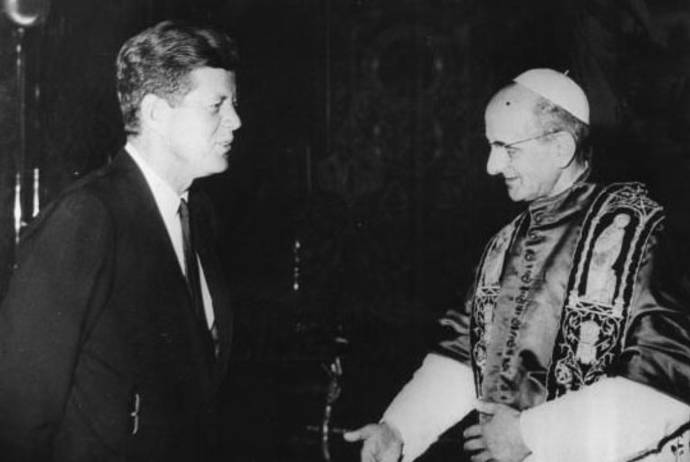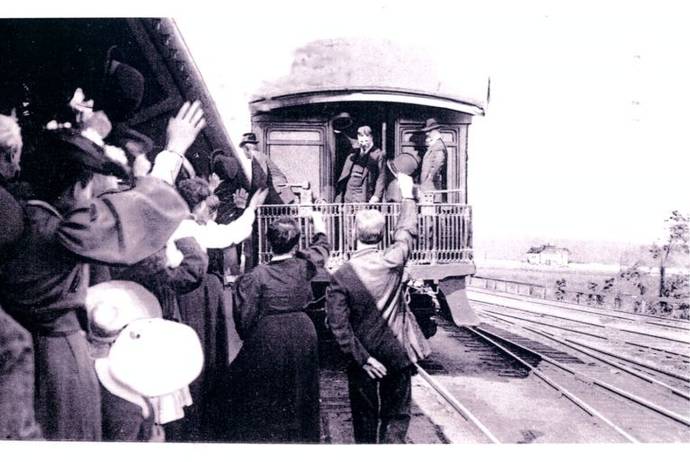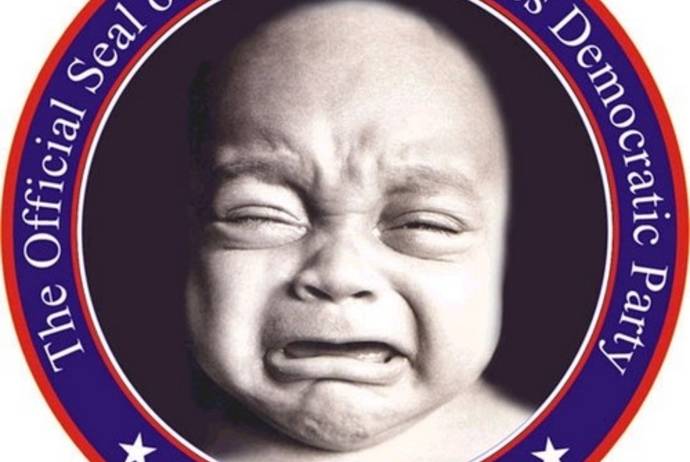A few weeks ago on my way to Paris, I received a phone call at JFK airport in New York just a minute before catching my 7 o’clock flight: “Al Gore endorsed Barack Obama.” While flying over the Atlantic I could not get any details, but I decided to write down something anyway. Ultimately, there were no significant details, but my thoughts during that flight reflected something much more complicated.
Al Gore’s endorsement represents the end of a dream. Deep inside, millions of Americans have been hoping for a messy Democratic convention where Al Gore will magically emerge as the Democratic nominee or an Independent candidate. While his endorsement does not rule out this remote possibility, it certainly feels like you’ve been woken up from a sweet dream with a glass of cold water being poured over your head.
The grass-roots movement that has been supporting Sen. Obama in this election is simply amazing. The number of people gathered at any of his public appearances is unbelievable. Even his small contribution-based financial campaign is striking to any pundit. The dedication of his volunteers and the passion of his followers are second only to the ardor of a European hooligan. His speeches and proposals are vague and unclear, just like the pure dream of a child longing for a better place to live. He has a catchy slogan, one that is nice enough to be liked by everyone and vague enough to suit everyone’s needs. While looking at such a peculiar relationship between leaders and their followers, any political scientist would be temped to speak about Populism.
However, instead of writing about Barack Obama’s presumptive Populism, I’d rather write about the chances that a Populist might have in the United States today. Writing about the presumptive Populism of a presumptive nominee is too presumptuous and would have no empirical or scientific basis at this early stage. On the contrary, writing about the country’s potential openness to the rise of a Populist leader does not raise unsubstantiated accusations and could shed some light on why people seem so open to a charismatic leader, seemingly able to make a dream come true.
In a recent article published by The Journal of Politics, Jennifer L. Merolla, Jennifer M. Ramos, and Elizabeth J. Zechmeist attempt to outline traces of Populism in the 2004 U.S. presidential elections. They focus on George W. Bush and how the incumbent president was perceived by the electorate, but the very basis of their study is quite interesting and lends itself to broader generalization. Their work is based on the assumption that during periods of crisis, charismatic leaders tend to rise to power. This direct relation between a strong, charismatic leader and a loosely defined “moment of crisis” is fascinating not only in well-known cases like those of Hitler in Germany, Perón in Argentina, Fujimoro in Peru, Chaves in Venezuela, or Sheikh Mujibur Rahman in Bangladesh. Indeed, explaining an American political phenomenon using the Republic of Weimar’s collapse or Fujimoro’s rise to power as examples is quite useless and far too complicated. On the contrary, it is much more useful to learn a few lessons from American history.
If it is true that Populist leaders tend to rise during periods of crisis, it is hard to imagine a better moment than the decade from 1929 to 1939 to look at the rise of such a political figure in the United States. The Great Depression and the Second World War were the biggest disasters of the 20th century and they unfolded within a single, terrible decade. This period saw the rise to power of a wonderful political leader: Franklin Delano Roosevelt. Dictators are famous for staying in power for a long time. Adolf Hitler is the most famous dictator of all time. Hitler came to power in Germany in 1933 and died in 1945 while still in power. Franklin Delano Roosevelt began his first term as president of the United States in 1933 and died in 1945 while still in office. It would be a tremendous historical mistake to ever imply that FDR was a dictator, but in his policies there was a slight leaning towards the kind of Populist political behavior seen only during critical historical moments and that could also lead to a not-so-democratic brand of leadership. In his magnificent book Diplomacy, Henry Kissinger – whether or not you like his politics, his work as a scholar is amazing and this is one of the best history books ever written – extensively explains how “no contemporary president could resort to Roosevelt’s methods and remain in office.”
Starting with the Great Depression, it is clear that, as President Herbert Hoover stated in the third volume of his Memoirs, “neither the American people nor the Congress would have approved such unprecedented measures before these ill winds began to strike our shores.” The measures proposed by Roosevelt and approved by the U.S. Congress were indeed unprecedented. The level of federal interference with economic-related issues was much higher than any state would have allowed under normal circumstances. Strikingly enough, even the Southern states – and the conservative Southern population – approved FDR’s political proposals to remedy the Great Depression, notwithstanding their diffused sympathy for states’ rights. FDR became more than a politician or a political leader for many families around the country. He was the president – the man who saved the people from hunger and suffering, the charismatic leader who knew how to lead the people of the United States. That moment of crisis created a great leader, one who was able to manage the crisis within the boundaries provided by the democratic constitution. At times, however, President Roosevelt tried to go beyond these rigid democratic boundaries. When the Supreme Court started to dismantle his public agencies’ crisis-management network, for example, he came up with an idea that critics dubbed as the “Court-packing plan,” a proposal that would simply strip all power from the Supreme Court and create a new court majority favorable to his administration.
A few years later, yet another moment of crisis allowed President Roosevelt to break with tradition. Following what is known in the American political tradition as George Washington’s Will, no president of the Unites States had ever tried to seek a third term in office. Roosevelt won four elections and died shortly after his fourth inauguration.
FDR’s entire management of the escalation of war in Europe shows that he was paying little attention to rules, boundaries, and constitutional checks and balances – elements that are of fundamental importance in a democratic regime. While the war was escalating in Europe and European powers were trying to appease Hitler with the full cooperation of Mussolini, the U.S. Congress enacted a series of Neutrality Acts to avoid American entanglement in European affairs. President Roosevelt, however, was deeply convinced that America’s duty was to stand by the other democratic powers and help the United Kingdom through any means possible. American neutrality laws prohibited any arms export to belligerent powers, so technically the president had his hands tied. At that point, Roosevelt came up with the idea of disassembling U.S. aircrafts and legally exporting them piece by piece to Canada, where they were re-assembled and sent to Europe. Although no laws were violated, it is clear that this was a way to exploit a legal loophole in order to implement the kind of foreign policy that Congress was trying to avoid. A few months later, Roosevelt convinced Congress and the American people that the right thing to do was to help the Allied forces in their struggle against Nazi and Fascist forces:
«Suppose my neighbor's home catches fire, and I have a length of garden hose four or five hundred feet away. If he can take my garden hose and connect it up with his hydrant, I may help him to put out his fire. Now, what do I do? I don't say to him before that operation, "Neighbor, my garden hose cost me $15; you have to pay me $15 for it." What is the transaction that goes on? I don't want $15--I want my garden hose back after the fire is over. All right. If it goes through the fire all right, intact, without any damage to it, he gives it back to me and thanks me very much for the use of it. But suppose it gets smashed up--holes in it--during the fire; we don't have to have too much formality about it, but I say to him, "I was glad to lend you that hose; I see I can't use it any more, it's all smashed up." He says, "How many feet of it were there?" I tell him, "There were 150 feet of it." He says, "All right, I will replace it." Now, if I get a nice garden hose back, I am in pretty good shape.» (FDR press conference, December 17, 1940.)
With this colorful anecdote the president got his “lease and lend” proposal approved, according to which American arms were sent for free to the Allied forces fighting in Europe.
Roosevelt made the right decisions during hard and dangerous times. He was in power longer than other great American leaders, but he ruled in a completely democratic fashion. At times his decisions and attitude hovered on the limits of the law, but ultimately he did the right thing.
Plato hypothesized that democracies are never perfect. According to the Greek philosopher, the ideal way to govern would be to give power to someone who is, as defined by Voltaire many centuries later, an “enlightened sovereign.” Indeed, who could govern better than a just and fair person with absolute power? The only problem with “enlightened sovereigns” is that they almost always run into the shadows and lose all of their pleasant enlightenment. The best historical example that comes to mind is Pope Pious IX. During the time when popes were not simply spiritual leaders but absolute monarchs governing a large state, Pious IX was at first considered a liberal reformer. He was later the author of the infamous encyclical Quanta Cura in 1864 which contained an outline of the errors of the modern world.
In the end, it is clear that we are living in a period of crisis. The economy is not well, there are two major, never-ending wars being fought in distant lands, and oil prices are at unsustainably high levels. In moments such as these people tend to look for strong political leadership. This cannot be considered as an absolute good or bad; it depends on the historical zeitgeist and on the leaders who receive this heightened sense of trust from voters. The United States has proved that it is happily protected against such degenerations of democracy. The American presidents who have had the opportunity to lean toward Populism are today remembered, both in the U.S. and all over the world, as some of the greatest democratic leaders of all time. We can only hope that this continues to remain true.
(Edited by Giulia Prestia)








































